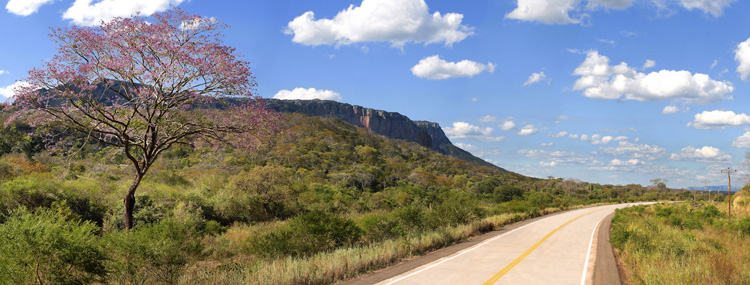
Communications, trade, and tourism for three countries
The Southern Interoceanic Corridor not only means an opportunity for the connection of 32 percent of the Peruvian territory, but also a door for trade with Bolivia and Brazil, as well as access to new markets.
The Southern Interoceanic Highway crosses the three natural regions of Peru. It goes across the departments of Madre de Dios, Puno, Cusco, Arequipa, Apurimac, Ayacucho, Moquegua, Ica and Tacna, which make up the Macro Southern Region.
It has been estimated that there will be an increase of 1.5 percent in the area's GDP when several development opportunities open up, promoted by the dinamization of communications, trade, and tourism.
The road will consolidate the interconnection of the Pacific and Atlantic oceans. This means access to new markets and an increase of trade and tourism between Peru, the central-western region of Brazil, and the north of Bolivia. At the same time, Brazil and Bolivia will gain access to the ports of Asia through Peruvian ports.
The reduction in travelling times and cargo transportation costs are part of the benefits, especially between the Macro SOuthern Region and the country's maritime ports.
The Macro Southern Region includes 25 percent of the areas protected by the State, and innumerable areas of cultural and historic wealth, a great biodiversity, and natural beauty, which are expected to become tourism destinations for an environmentally sustainable industry.
This area includes the Manu National Park and the Bahuaja Sonene National Park, the National Sanctuaries Lagunas de Mejía in Arequipa, the National Reserves of Pampa Galeras, Titicaca and Tambopata-Candamo. Also in the area of influence are the famous Nazca Lines in Ica and the Valleys of Colca and Cotahuasi in Arequipa.
CAF's more recent content

CAF, ECLAC, IDB and PAHO Promote Sustainable Development in the G20
The Regional Organizations of the Americas congratulate Brazil on its successful G20 Presidency, highlighting its leadership on key issues such as poverty, governance, and climate change. They also reaffirm their commitment to actions that promote equity and development in the region.
Urgent Call for Action to Safeguard Caribbean SIDS at CAF Symposium
As the global community grapples with the escalating climate crisis, Caribbean Small Island Developing States (SIDS) are running out of time to secure critical investments and support needed to strengthen their economies and protect vulnerable communities from the intensifying impacts of climate change. With the window to take decisive action rapidly shrinking, CAF - Development Bank of Latin America and the Caribbean, in partnership with the Commonwealth Secretariat and the Antigua and Barbuda High Commission, brought together key stakeholders for a symposium in London to address the critical vulnerabilities Caribbean SIDS face.